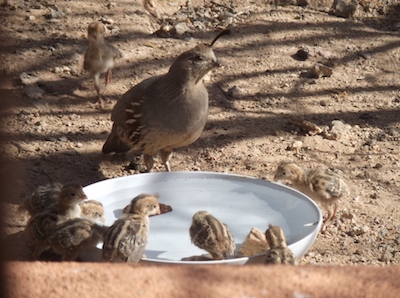

This Thanksgiving I have much to be thankful for, but what I am most thankful for is the development of modern civilization.
In my area of study, anthropology, we often focus on the negatives of civilization while romanticizing the precivilized cultures. For example, Tomáš Trnvec and colleagues (2001), in their article “Civilization as a Threat to Human Health?”, list osteoporosis, arthritis, syphilis, salmonella, and lactose intolerance as diseases of civilization, although these diseases were present in pre-civilized peoples. Andrew Matthews (2020), in the review article “Anthropology and the Anthropocene: Criticisms, Experiments, and Collaborations,” claims that Atlantic modernity arose from slavery. And Jeff Lewis and Belinda Lewis (2017), in the article “The Myth of Declining Violence: Liberal Evolutionism and Violent Complexity,”argue that the modern world is far more violent than worlds of the past and state that those who think violence has declined do so to promote First World Nations.
If agriculture was all bad, surely they would have gone back to hunting and gathering!
There are also numerous studies that focus on the wretched consequences of the Agricultural Revolution. I am not one to deny that many of the health consequences of agriculture were initially bad. For instance, in skeletons found in parts of the New World where maize agriculture was adopted, anthropologists see evidence of an increase in iron deficiency and of infections such as tuberculosis and syphilis; see Clark Larsen’s (2018) review article “The Bioarchaeology of Health Crisis: Infectious Disease in the Past.” Also, higher parasite loads, such as hookworms, have been found in fossilized feces (a.k.a coprolites) of agricultural populations compared to pre-agricultural populations in pre-contact Tennessee (see George Perry’s 2014 article Parasites and Human Evolution”). It does seem that in North America, hunter-gatherers were healthier than the continent’s first farmers.

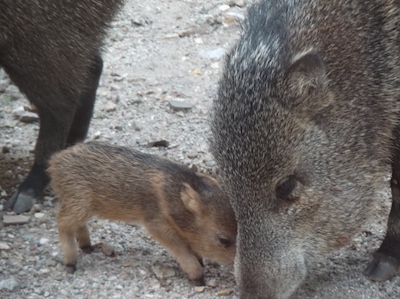
But if it was all bad, surely they would have gone back to hunting and gathering! Hunter-gatherers, too, faced health dilemmas of starvation, injury, and illnesses. For instance, in Californian hunter-gatherer sites, violence as evidenced in embedded obsidian arrowheads, cranial depressions, and broken noses were commonplace and perhaps an everyday occurrence; for a good example see Robert Jurmain et al.’s (2009) article “Paleoepidemiological Patterns of Interpersonal Aggression in a Prehistoric Central California Population from CA‐ALA‐329”). Currently, there is even the myth of living hunter-gatherers being healthier than those in modern societies. Yet even the research suggesting that hunter-gatherers are healthy cannot deny that their longevity does not match up to our own. For example, Michael Gurven and Hillard Kaplan’s (2007) article “Longevity among Hunter-Gatherers: A Cross-Cultural Examination” revealed that the lifespan mode, after adjusting for infant and child mortality, in hunter-gatherers in multiple places around the world is about 72 years of age, which is suggested to be close to the US population mode of 85 years of age! Agriculture set a path to overcome the constant need to worry about food by enabling food storage and providing a steadier food supply. This is not to say that agriculture was a perfect solution and starvation did not sometimes occur. For instance, at an agricultural site in Arizona called Grasshopper Pueblo, cranial depressions were found in a third of the skulls examined; this high level of violence seemed to correspond to a drought period (Kathryn Baustian et al.’s 2012 article “Battered and Abused: Analysis of Trauma at Grasshopper Pueblo [AD 1275–1400]”). Famously, the southwest agricultural sites of Colorado Anasazi illustrate evidence of cannibalism, such as sites in which every type of human bone was fragmented or had cutmarks on it. Although not conclusive, cannibalism among Native Americans in the southwest has been linked to drought conditions. Thus, it wasn’t perfect, but the step into the agricultural way of life makes us distinct from all other animals.
The changes in technology, from farming technology to refrigeration to ready healthy meals, has changed our world for the better.
After agriculture, we were propelled to the Industrial Revolution. The Industrial Revolution too had some unfortunate consequences, such as the increase in rickets in Europe during the 1800s because of the intense air pollution and long inside working hours for children (see Simon Mays et al.’s, 2009, article “Growth and Vitamin D Deficiency in a Population from 19th Century Birmingham, England”). From 1700 to 1850, the technology, such as the invention of the horse-drawn seed drill by Jethro Tull and the triangular plough by Joseph Foljambe, doubled farmers’ output and enabled fewer people to work in food production, which in turn allowed for the growth of urbanization. Innovations also included: electricity to allow people to do serious work at night, cars that allowed longer-distance travel, and the telephone that helped communication with family and friends far away. Although the Industrial Revolution brought changes in the food industry to allow for far greater food productivity, which is sometimes seen as a second agricultural revolution, in North America moving away from agriculture was a slow process, and even as late as the 1920s, 30% of the US population lived on farms. Now, that figure is less than 2% of the population, and each farmer can feed 155 people, compared to a little over two dozen in 1965. The changes in technology, from farming technology to refrigeration to ready healthy meals, has changed our world for the better. People get less sick, there are strawberries year-round, and we spend far less time on chores than even a few decades ago.

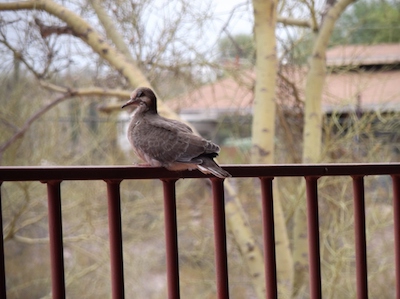
My maternal grandmother, Gretel Leisegang, raised her dozen children, and in doing so spent her days handwashing clothes, preparing meals from scratch, and buying fresh foods each day (no refrigeration); this was the norm in Germany in the 1930s and through to the 1950s. These tasks now often take only minutes even in big families, setting the scene for a society in which women — to whom household chores usually fell — were able to pursue higher education and enter the workplace in increasing numbers, thus leading to a more equitable society. Modernity has brought us washing machines, fortified grains and dairy, and refrigeration! Because of the introduction of preservatives, food that would previously have spoiled can now be used. Yet ironically, “preservatives” are viewed as bad by many, despite the obvious fact that “preservative” means something that preserves — a good thing, surely? The lives of those in Industrialized Nations have been getting longer, despite the fact that obesity has become a problem.
Most importantly, perhaps, starvation is unheard of in the United States and many other industrial nations; so much so that hunger had to be redefined as “food insecurity,” which may just mean worrying about a shortage of food in the house with no actual changes in food intake. Even modern liberal news sources such as the New York Times cannot find a skinny family to feature in their American hunger stories. While engaging in the faculty-in-residence program at San José State University I found it hard to entice students to come to events featuring free pizza, because on-campus students were able to have any food they pleased, practically at any time. Our school foodbank is always filled with plenty of well-fed (or even overfed) students.
What has freedom from the constant search for food meant for us — and why am I thankful for this liberty?

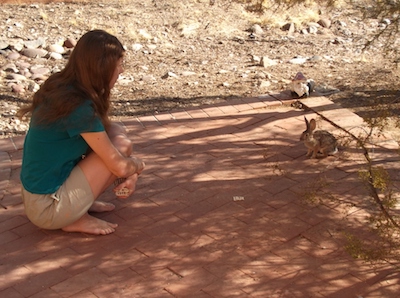
Clearly, it has enabled us to appreciate nature for its beauty instead of its sheer utility. As I sit here on my porch, I look out at the various bunnies, which I have named Sir Hop-a-Lot, Count Cotton-Tail, Lord Leap-About, Queen Quickstep, and Earl All-Ears (who is actually a hare), and marvel at the intricacy of their evolutionary form: the softness of their fur, the alertness in their eyes, the veins running through their ears, the distinct white fur on their lower nostrils, and of course their cotton-tails. It gives me such pleasure to see them that I put out food aptly named Critter Crunch, although Sir Hop-a-Lot is particularly fond of unsalted matzos. I also have bird feeders that allow me the joys of watching cardinals, Gila woodpeckers, and a whole variety of finches. And one cannot forget the delightful sounds of squabbling quail and the sight of those birds running along with fancy feathers, like church ladies running late on a Sunday morning. Never do I view these animals with hungry eyes, and they seem to know it.
Without modern civilization, we could not have become environmentally conscious.
Only someone with easy access to food and an abundance of free time can glance over to this sort of wonder. The same wonder and love of nature inspired the development of national parks, which started in the US in the 1870s with Yellowstone National Park. In the US, the protected land contains over 85 million acres; these protected lands could not be used in this way if we didn’t have exceedingly productive farmlands and a well-fed society with people who have enough free time to visit the parks. The US National Parks had over 300 million visitors last year. But before the National Parks Service, naturalists studied the world of animals, bringing the wonder into people’s homes through illustrated books. John James Audubon (1785–1851) is perhaps the most famous of these. I recall reading in a biography of Audubon that he traveled throughout America to illustrate birds and would have to sell copies of his book by going from one wealthy individual to another; it was a tough way to make a living. Now, we can all enjoy the splendors of his work — because of mass printing, yet another product of capitalist industry.
Our desire to save animals, conserve lands, and take care of the sick and poor are all evidence of altruism. Altruism is plentiful because of modern civilization. Animal behavioral researchers looking to make the case for altruism in other species note that they cannot determine whether nonhuman animals behave altruistically by seeing whether they share food; the drive not to starve is so fierce that it overrides all other behavior. For an example in chimps, take a look at Shinya Yamamoto and Masayuki Tanaka’s 2009 article “How Did Altruism and Reciprocity Evolve in Humans?” This fierce drive not to starve was likely present in all early humans. The freedom of not worrying about our next meal enabled our altruistic behaviors — adoptions, donations, rescues, caring about the environment, on and on. Unfortunately, starvation is still a factor in the Third World. In these locations, bushmeat hunting of primates, destructive logging, and extreme corruption are more abundant than altruism. Venezuela’s crime rate has increased dramatically with the onset of communism, which has also led to nationwide hunger.

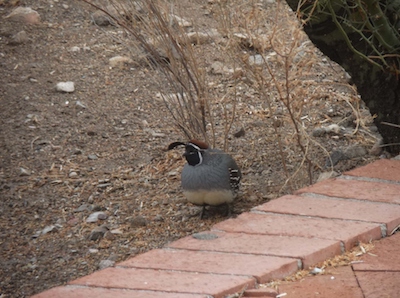
Without modern civilization, we could not have become environmentally conscious. The capitalist industrial nations, especially Japan, Canada, the US, and the countries of Western Europe, gave rise to the environmental movement. Native Americans, often said to have been the first environmentalists, and other indigenous people did not have the luxury of looking at nature through an aesthetic perspective rather than as a resource to be exploited. Native American hunting led to the extinction or near extinction of many animals, such as mammoths, giant sloths, and bison.
The modern world’s liberty from starvation enabled culture to blossom. We get the first cave art around 40,000 years ago, which coincides with Homo sapiens’ arrival in Europe; Homo sapiens were likely more effective hunters than Neanderthals. Neanderthal cannibalism occurred frequently. Neanderthals also faced serious injuries from close contact with large animals, whereas Homo sapiens were able to figure out that throwing tools was a good way to get food without being in harm’s way. (See Sabine Gaudzinski-Windheuser et al.’s (2018) article “Evidence for Close-Range Hunting by Last Interglacial Neanderthals.” However, recent research suggests that this may be too simple of a narrative; see Judith Beier et al.’s (2018) article “Similar Cranial Trauma Prevalence among Neanderthals and Upper Palaeolithic Modern Humans.”)

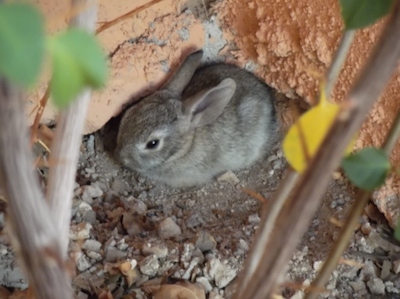
Written language did not arise until the birth of civilization. There is strong evidence that writing (and numerical systems) developed from tallying food surpluses that resulted from transitioning from hunting-and-gathering to agriculture. Writing was such a good idea that, like agriculture, it had (several points of origin: Mesopotamia, China, Egypt, and Mesoamerica. Writing allows us to tell stories of others, helps us understand the past and dream of a better future. It facilitates the sharing of knowledge, which is the foundation on which effective education and science are based. It is amazing to think that as late as 200 years ago most non-Western or Eastern peoples were still not writing. (See Willard Walker and James Sarbaugh’s 1993 article “The Early History of the Cherokee Syllabary”; Robert Dixon, 2002, Australian Languages: Their Nature and Development, Cambridge University Press; and Ali Abdi, 2009, chapter in Education, Decolonization, and Development, Brill.) Oral traditions are a poor substitute for written records. For instance, the gift of horses to Blackfoot Indians by Spanish Colonialists is well documented, but when ethnographer John Ewers (1955), The Horse in Blackfoot Indian Culture, Smithsonian Institute) asked elderly tribesmen in the 1940s, some knew nothing of this gift; others told stories of the horses being provided by spirits, such as Thunderbird; and some said that horses were a gift from God to their people. Not surprisingly, in less than 200 years a well-documented historical event had been erased from the tribe’s memory. Oral tradition is constantly changing and doesn’t allow us a true glimpse into the past.
As we move into next year, we may lament that so much of this year was out of whack because of COVID-19 or, if you like, the reaction to COVID-19. But we have so much to be thankful for in the modern world. Agriculture, industry, and technology have given us the freedom to live an enriched life, one in which we are be able to choose our own passions, be they nature observations, computer games, or anything in between. A life in which food for the body is plentiful, easily available and cheap, leads to a life in which food for the mind can be consumed every day, using leisure time only available to us because we’re not having to constantly seek food. We can only hope that the First World’s liberty is passed on to the rest of the world. To quote Vladimir Putin in regards to Greta Thunberg’s UN speech: “No one has explained to Greta that the modern world is complex and different and . . . people in Africa or in many Asian countries want to live at the same wealth level as in Sweden.” It is ironic that I end this article on liberty with a quote from Vladimir Putin. However, I think his perspective on wealth, modernity, and the environment is important — although it should be obvious. How thankful we should be for what we have, and how important it is for others to reach this same state of civilization.


What you seem to not understand is that as a colonizer, and invader, you have no rights to any Native American remains. There are no colonizer rights to the ancestral remains and artifacts of the ancestral remains of Native Americans. Also, the fact remains that as invader colonizers, you have an inborn bias against the Native American race, and ancestral remains that you shouldn’t be allowed to study Native Americans and their ancestors remains. YOU have NO rights to anything having to do with Native Americans because you are a foreigner!
Said while living in a house built by colonizers while using the internet that was invented by colonizers. You should read Dr. Weiss’s book”Repatriation and Erasing the Past” to make a more informed comment.